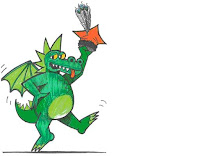Proserpina’s kidnapping
Proserpina,( the Greek Persephone), is the Roman goddess of the underworld. She was the daughter of Ceres, (the Greek Demeter, goddess of the earth and agriculture).
Pluto, the god of the underworld, fell in love with her. As her mother didn’t permit their marriage, Pluto kidnapped Proserpina while she was collecting flowers on the mount Etna, and took her to live with him. A single mother, Ceres felt abandoned by her daughter's absence. Proserpina ate six pomegranate seeds, an action that could have sealed her fate to live in the underworld forever. But Ceres, being a shrewd mother, was able to negotiate through Iuppiter with Pluto for her daughter's custody. Proserpina would spend half of the year with Pluto in the underworld and half of the year living with her mother. During the time Proserpina was in the underworld, Ceres was so grief-stricken that she refused to allow anything on Earth to be beautiful or fruitful, and these are the winter months. When Ceres has her daughter to look after, she is happy and the earth brought forth crops, giving food, so we have summer and the autumn harvest.
A Sicilian poem: “Apuzza nica” - LITTLE BEE.
Tell me, tell me, little bee
Where are you going so early in the morning?
Not even a top of the next mountains
Is becoming red for the sunlight, yet.
The dewdrops are still trembling,
They are sparkling in the grass,
Take care, do not get wet
Your gentle golden wings!
The sleepy little flowers
Inside their green buds
Are still closed and curled up
Keeping their heads leaned.
But your little wings are getting tired!
But you are flying and going on!
Tell me, tell me, little bee
Where are you going so early in the morning?
This poem was written in Sicilian language by the poet Giovanni Meli in the 18th century.




